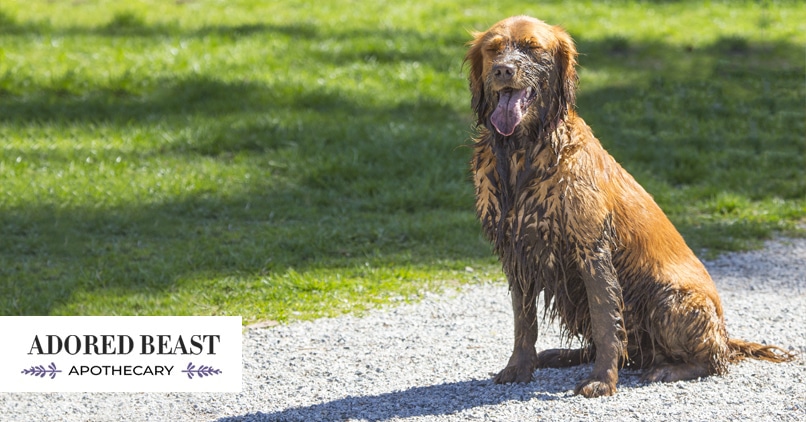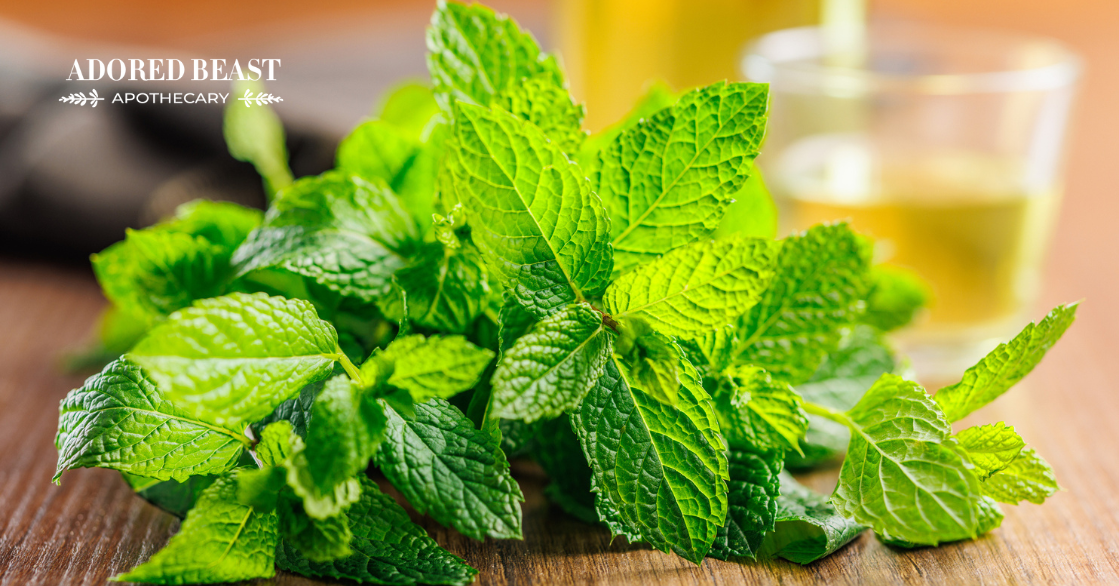It is amazing how even the way we learn becomes a path to more knowledge… like a creek to a stream, a stream to a river, and a river to the ocean that touches and connects every part of the world.
One word or philosophy I use in my life is “synergetic.” This, to me, means the balance of nature working in perfect harmony. This concept is part of why I look at the body and the way physiology works. Something happens when we decompartmentalize one organ or body function and don’t take every single system of the body into account with every single disease. When we do, we are not just missing the boat on the journey to healing, but actually causing a ripple effect and creating much deeper diseases by off balancing the perfectly synergistic way our bodies have been designed to heal. This is how I have practised for 20 years in my vet clinic and have actually taught others at vet conferences, looking at physiology in an encompassing way.
I find it fascinating how plants, trees, and fungi not only grow together to support one another, but actually communicate with each other. This communication allows for the support of long term health and healing of a forest, meadow, and ecosystem.
It was this understanding that led me to create products with very little focus on super-sized amounts and instead more on how a combination of herbs, nutraceuticals, and homeopathic remedies support the OVERALL healing response in the body like it does in nature. My goal is to create remedies that work as a group, instead of isolated ingredients working on a diagnosed disease.
Next, this took me down a path looking at the complete imbalance of gut bacteria. This imbalance creates, in my opinion, more chronic disease – including cancer – than any other single contributing factor outside the body (except for stress and negative emotions).
This is my segue into the importance of bacterial biodiversity – not only in the gut, but on the skin. For dog skin health, it is equally important.
Dog Skin Health
I continue to shout this from the tree tops: while cancer is the number one cause of death in our dogs, skin disease is still the number one cause of elective euthanasia, and it’s also the cause of years of suffering and poor quality of life.
So what can we do about that?
I would like you to try and think of the skin as an intelligent platform for your dog’s army. A place for the army to reside, an army that needs to be fed and supported and nurtured. Stop looking at it as a passive surface that you need to clean. As it turns out, this cleaning process has an incredibly negative effect on dog skin health and the immune system!
The skin is the largest organ in the body. It’s the major interface between your dog and everything in the world outside. The biggest player in this protection against chemicals and the environment is the skin microbiome – a collection of bacteria, yeasts and parasites.
As we all know, the gut is central to overall health, hence the importance of a healthy micro-eco-system of bacteria. Science is now putting some focus into the research of the importance of that same ecosystem on the skin. It’s showing us that the skin microbiome is paramount in preventing allergies, skin disease and autoimmunity. It protects against infection and inflammation in a similar fashion as the gut flora! In the same way modernity seems to disrupt the natural flora in the gut with antibiotics, poor quality nutrition, stress, lifestyle, and drugs in our dogs and ourselves, the same holds true with the skin!
Outdated research once thought that skin microbiome only only existed on the surface of the skin, that the deeper layers were sterile. Now we know we can find these organisms all the way down to the subcutaneous fat layer. What is even more fascinating is that the skin microbiome and the skin immune system constantly communicate with each other to:
- decrease inflammation
- aid in wound healing
- limit exposure to allergens and UV radiation
- derail oxidative stress
How? A fascinating thing called SALT – Skin Associated Lymphoid Tissue. These immune cells “talk” to the the lymph nodes within the body that distribute signals to the overall body’s immune response to determine the correct course of action (pretty important stuff!!).
A Disrupted Skin Microbiome
An imbalance of skin microbiome can lead to:
- skin
- allergies
- reactivity
- hot spots
- atopic dermatitis
- poor wound healing
- overgrowth of yeast
- fungal infections
The list goes on and on! Things like Malassezia and even Demodex are ALL a natural part of the skin microbiome!!!!
When we compromise the ecosystem, the bacteria that normally keep these guys at a healthy level are destroyed. That’s when the problems begin! It gets even worse once the skin is injured (inflammation, hot spots). Then the diversity of the remanding good bacteria drops even more. YIKES. Then we add topical antibiotics and antifungals that destroy even more and make the skin even more susceptible to outside invaders and harmful pathogens and infection. On top of that, we then add internal/oral antibiotics that destroy the gut bacteria and you have a dog that is TOTALLY VULNERABLE to everything!
Sound familiar as your dog’s allergies and sensitivities become worse every year??
What Impacts Dog Skin Health?
Ok, so now that we know the importance, let’s find out some of the things that decrease skin microbiome:
- “Hygiene hypothesis” – brainwashing and fear tactics make us believe we need to live in a sterile world to stay healthy. Instead, this is not only causing the destruction of our bodies’ natural ecosystems – our main source of defence and continued health – it is also causing superbugs and viruses that are resistant to drugs. Using hand sanitizers then petting your dog, shampooing them weekly, monthly, or even sometimes just yearly, and using topical antimicrobials or antibiotics all cause and contribute to your dog’s skin disease, allergies, and your ill health.
- Topical flea and tick treatments. Anything you apply to your dog’s skin can harm the natural skin ecosystem, and these pesticides will too.
- Not letting them get and stay dirty is probably the most important issue. That’s right – that lack of dirt, mud, soil, manure, other dogs’ saliva… just plain old-fashioned getting dirty! Dogs and people used to get dirty; we gardened, they dug holes, ran through and played in everything. Everything and everyone lacks dirt and has a fear of getting dirty. Ironically, all of these things actually contribute to a healthy skin microbiome.
The Skin Microbiome in Healthy Vs. Allergic Dogs
A 2014 study at Texas A & M University, The Skin Microbiome in Healthy and Allergic Dogs, looked at the difference in community and diversity of the microbiome living on the skin of healthy dogs compared to allergic dogs, as well as compared to dogs with atopic dermatitis.
The study found that allergic dogs had lower species richness of microbiome compared to the healthy dogs (demonstrating that the skin supports a much more biodiverse ecological system of friendly health-supporting bacteria fungi and viruses (microbiome) than had been thought before and that the diversity of the skin microbiome in atopic dogs is reduced compared to healthy dogs.
Another study in the UK in 2017, Meta Analysis of Skin Microbiome: New Link between Skin Microbiota Diversity and Skin Health with Proposal to Use This as a Future Mechanism to Determine Whether Cosmetic Products Damage the Skin, showed that there was a decrease in microbial diversity in children during flare-ups of atopic dermatitis with skin dominated by Staphylococcus aureus. This was also observed frequently on the skin of allergic dogs. But the most important conclusion was “the clinical effectiveness of treatments for AD didn’t depend on the elimination of Staphylococcus aureus, but on the diversification of the bacterial community.”
This means that trying to kill Staphylococcus aureus with drugs is not only ineffective in treating atopic dermatitis, but actually lowers diversity in the bacterial community, adding to the imbalance and creating further disease.
What Can You Do to Improve Dog Skin Health?
What’s the best way to boost the skin microbiome and improve dog skin health? Let your dog: Get Down, Get Real and Get Dirty!!!!
1. Introduce them to dirt. Take them to as many different dog parks, parks, wooded trails, beaches, farms, etc. as you can. The more diverse the dirt, the better.
2. Get a doggy pool (kiddy pool), go to a nursery and fill the pool with different organic dirt and material like organic compost and manure. Then, let your dog roll in it, dig in, bury toys in it. You can even add water to make mud, let them play in it, let it sit on their skin, then hose them off with just water and NO soap. For apartments, get flower planters that are flat and use them.
3. Make a yogurt or kefir mask for your dog’s skin and coat. Use a ratio of 3 tablespoons of organic yogurt to 1/2 tsp of a probiotic that has at least 10 strains and 30 billion CFUs. Increase the amount of yogurt as needed for the size of your dog. Leave it on for at least half an hour, then rinse with JUST water.
4. Use liquid castile soap if you have to use any soap. It is great for a household cleaner as well!
5. Be aware of bedding! Natural fibres like cotton, linen, and hemp hold a more natural balance of bacteria compared to synthetic fibres, which hold bacteria that can be harmful to the normal skin microbiome.
6. Mutualistically Cross Species Seeding = Touch your dog! Many, many studies show that people raised with dogs in their homes as children are much less likely to have allergies and autoimmune issues. But what about the other way around?Touching our dogs, especially if we’re dirty and sweaty, allows for cross species diversity and “seeding.” This creates a diverse ecosystem for your dogs and you! If your dog is really suffering with skin disease, try taking a dry, cotton towel, rubbing your body EVERYWHERE BEFORE your shower, and wiping it on your dog or laying it on his bed.
To me, hugging and cuddling is way better, but for those of you still apprehensive of doing that with extreme skin disease then this is an alternative. This is one of the saddest things I have ever seen – when a family stops touching their dog because he is smelly or looks “diseased.” This then becomes not only a physical disease but emotional isolation. Add a stupid plastic cone to the mix and my god now you know why it’s a huge passion for me to try and get to the bottom of the epidemic of skin problems in dogs.
The Consequences of Disrupting an Ecosystem
The story, to me, is a perfect illustration of what happens when we disturb the natural balance of our ecosystems. It shows what happened when wolves were eliminated from Yellowstone National Park and then later reintroduced.
Wolves had been a natural part of Yellowstone until the last official killing in 1926. They were brought back in 1995 to keep the elk population under control. While other changes in animal populations strained the park’s ecosystem, the rise of the elks was the biggest contributor to the deteriorating conditions of the park. Yellowstone contained “some of the worst overgrazed willow communities in the West.”
As soon as the elk weren’t limited by wolf predation, they became “pathogenic” to the ecosystem. Their numbers swelled and overgrazing occurred. This created pressure on aspens and willows, which beavers use for food and dam building materials. The loss of beaver dams caused increased erosion and lost habitats for fish, amphibians, otters, moose, mink, wading birds and more.
The 1995 re-introduction of wolves to Yellowstone had a profound effect on the Park’s biodiversity in ways that no scientist ever expected. Just by reintroducing the wolves, the biodiversity increased. Direct and indirect changes took place: rivers changed direction; beaver, grizzly bear, eagle, raven and other animal populations increased; berry-producing shrubs grew higher and richer; out of control elk populations went down.
This example highlights a crucially important concept: the addition or removal of even one species leads to non-linear changes to the ecosystem. The same delicate balance exists on the skin. When the balance is upset, organisms not associated with pathogenic behavior can become damaging to the host.
We can relate the role of elk — out of proportion in numbers after wolves were eliminated from the park — to that of a pathogenic skin microbe opportunistically becoming invasive to the host (the skin) once the delicate balance is disturbed.
For me this shows how nature and all animals continue to teach and show us how to heal ourselves and the world at large, without billions of dollars being spent to find more drugs that eradicate what one group of dogmatic politicians or scientists feel is the flavor of the day. We just need to pay attention, watch and listen — and speak up when we learn!












